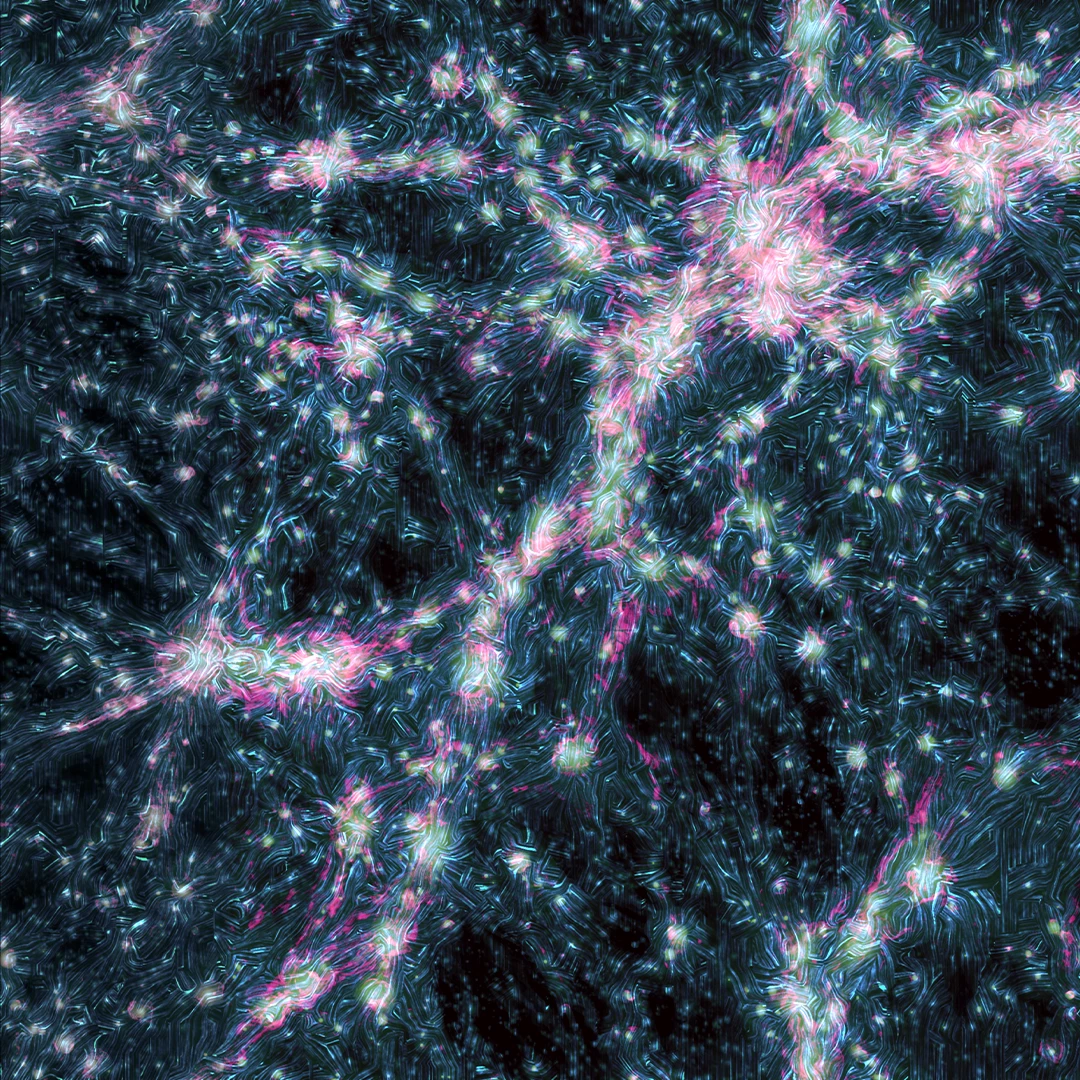If you could zoom way, way out to look at the universe at its largest scale, you’d see that it’s made up of a colossal cosmic web. Now, astronomers have detected shockwaves moving through this web, providing new insights into large-scale magnetic fields.
When the universe was young, it was more or less uniform, with matter and magnetic fields essentially the same in all directions. But over time, the distribution of dark matter attracted matter to it, forming a gigantic network of dense filaments containing galaxies and clusters, threading between vast voids.
This cosmic web was first theoretically proposed in the 1960s, and its structure was modeled in simulations beginning in the 1980s. More recently, astronomers have been able to map it out and observe the glow of its filaments.
In the new study, scientists from ICRAR and the CSIRO have managed to observe radio emissions coming from shockwaves rolling through the cosmic web. Doing so wasn’t easy, since the signals are extremely faint and hard to pick out of the background of all the other radio emissions blaring constantly through the universe.
So the team instead focused on a variation that’s less common – polarized radio signals, which are produced in the cosmic web as the end result of a cascade of processes. Regions of the web that are more dense with matter will attract even more matter through gravity. As matter falls into these regions it heats up the gases there, which radiates outwards as shockwaves. When these shockwaves reach the extremely cold voids, that interaction gives off polarized radio light.
The team used data from several projects and observatories, including the Global Magneto-Ionic Medium Survey, the Planck Legacy Archive, the Owens Valley Long Wavelength Array and the Murchison Widefield Array. This allowed them to stack data of detected polarized radio emissions over the top of known cosmic web clusters and filaments, showing that the detections were indeed coming from the web.
“As very few sources emit polarized radio light, our search was less prone to contamination and we have been able to provide much stronger evidence that we are seeing emissions from the shockwaves in the largest structures in the universe, which helps to confirm our models for the growth of this large-scale structure,” said Dr. Tessa Vernstrom, lead author of the study.
The team says these new observations will help astronomers understand how magnetism works at the largest scales in the universe.
The research was published in the journal Science Advances. The team describes the work in the video below.
Source: ICRAR




